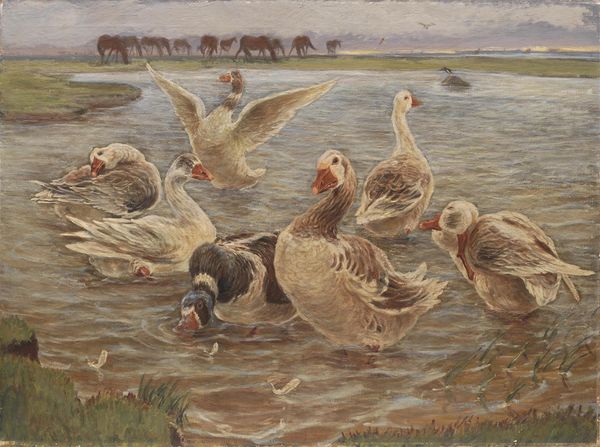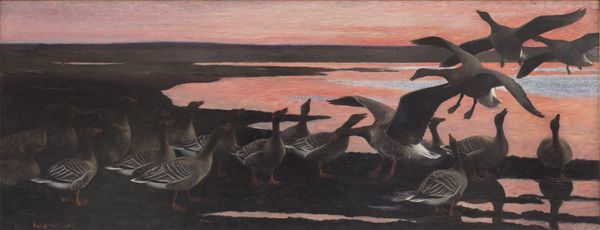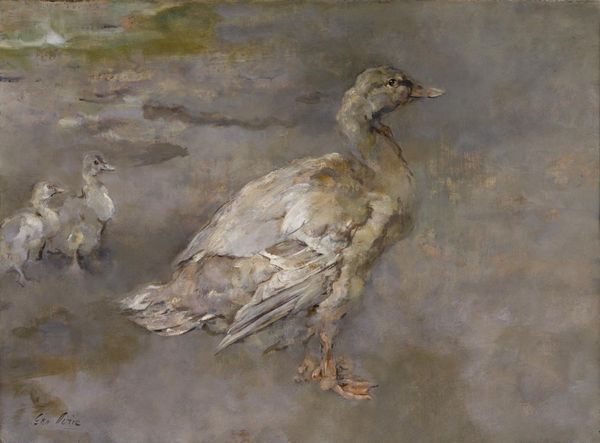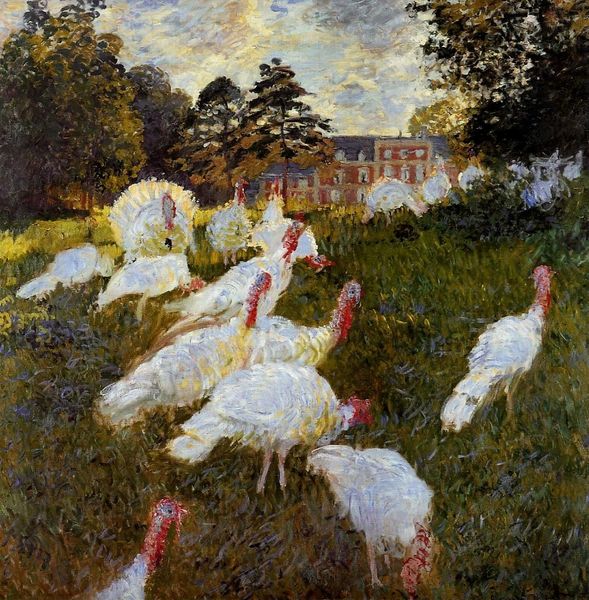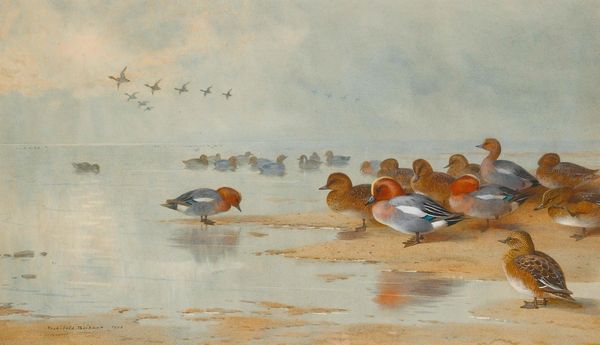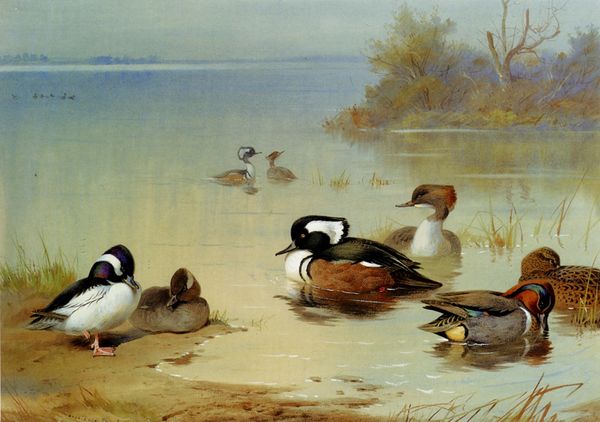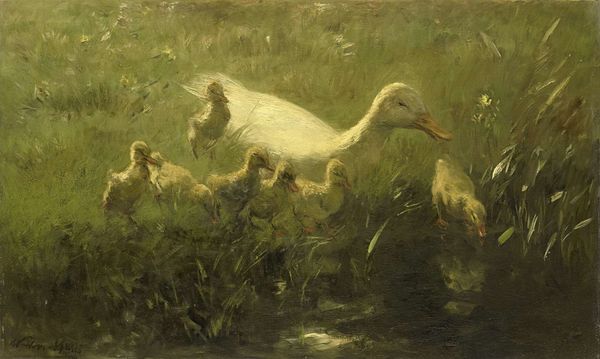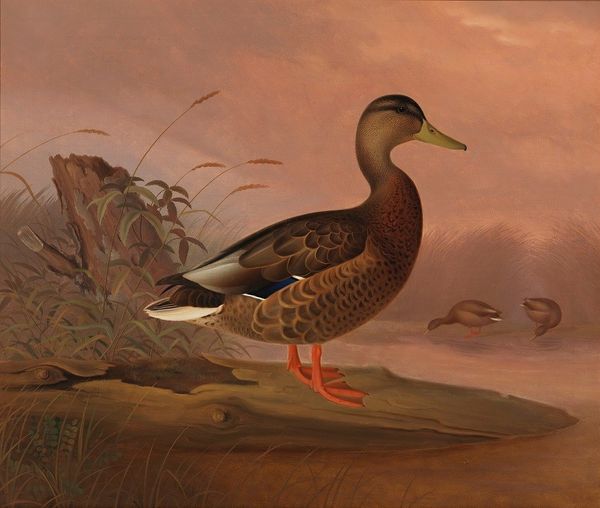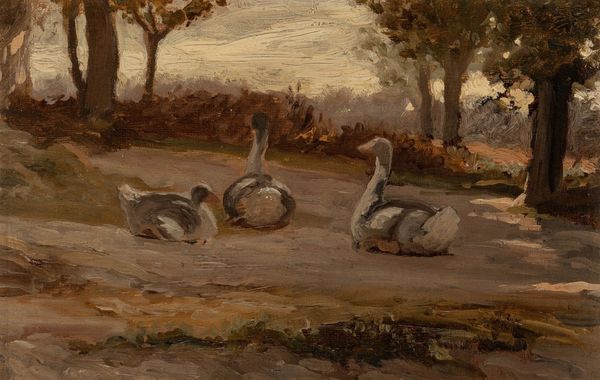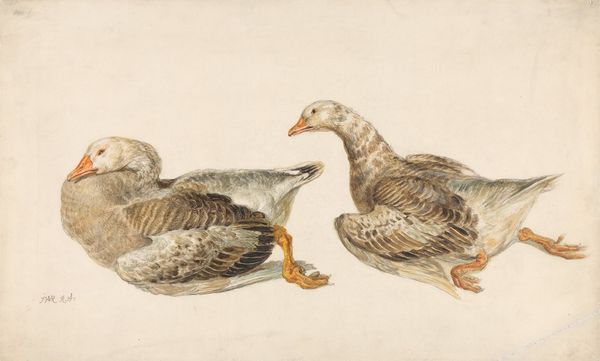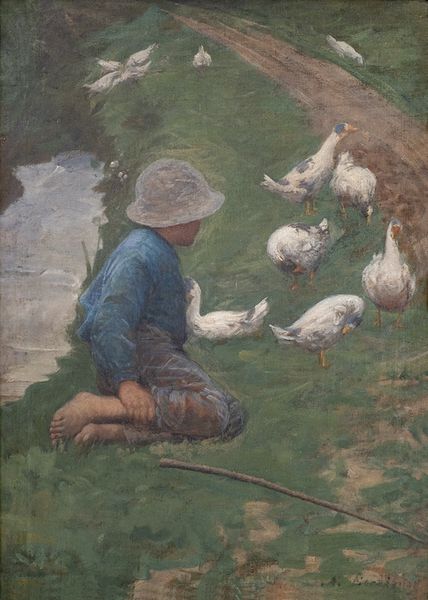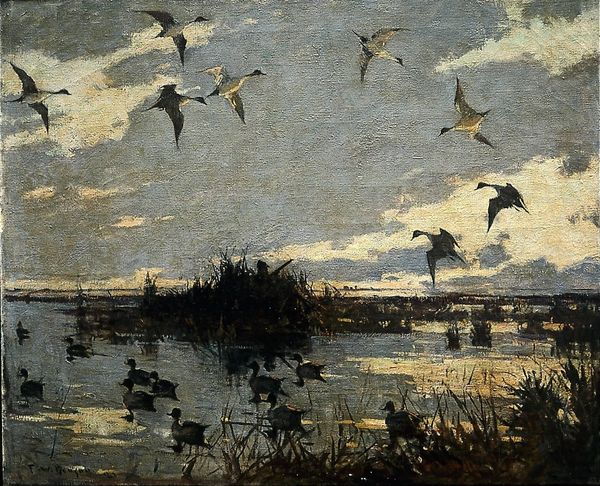
Dimensions: 97 × 126 cm (38 3/16 × 49 11/16 in.)
Copyright: Public Domain
Editor: So, we’re looking at “Les Oies,” or "The Geese," an 1897 oil painting by Theodor Philipsen at the Art Institute of Chicago. I’m struck by how grounded it feels; the earthy tones and focus on these everyday animals creates a sense of simplicity. What’s your take? Curator: I'm drawn to how Philipsen uses materials to capture rural labor. Observe the visible brushstrokes, the texture of the paint itself – it emphasizes the physicality of both the artistic process and the agricultural context. Think about what goes into livestock management – breeding, rearing, selling. Editor: I hadn't thought about it that way, I was just seeing pretty birds! Curator: But it is also a look at the commerce of live animals; Philipsen is also an accomplished livestock painter. Notice also the geese's placement within the landscape, it makes for comment on land usage, as Philipsen painted landscapes across Europe's countryside. The canvas and oils are commodities, as much as the livestock are depicted. Don't you find it fascinating how the Impressionist style can be re-interpreted as commenting on the commercial trade and production of painting? Editor: Absolutely. It’s interesting to consider that seemingly idyllic scene with geese wading around as a look into a system of resources and labor. The artist used physical materials, canvases and paints, just as a goose herder might work in the field. Curator: Precisely. The act of painting becomes analogous to the labor represented, doesn’t it? It reminds us that art production, too, is work, influenced by social and economic realities. Editor: That shifts my perspective completely. Thanks, I am newly aware that the means of production and social context should always be considered! Curator: Likewise. Every brushstroke tells a story beyond aesthetics, if we choose to see it.
Comments
No comments
Be the first to comment and join the conversation on the ultimate creative platform.
